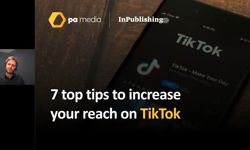
Q: What are the main challenges in managing the content workflow for a multichannel media organisation?
A:
Some of the organisations we are working with are using very complex systems to manage their workflow. Although things are working fine, if they take a step back and observe their infrastructure, the result is a conglomeration of multiple systems, loosely coupled together – different databases, duplicated data and many manual processes. The most important assets for a publisher are their content and their audience. So, they both must be placed at the centre of the workflow. However, it’s not uncommon for media companies to have multiple CMSs for different publications or for print and digital. This prevents reuse of content in a sister publication. The same is true for their audience: collecting data about subscribers and readership is crucial to increasing content monetisation opportunities.Q: What is the potential for process automation?
A:
Every media organisation is looking at making its processes more efficient. This is a known fact. The issue is that inefficiencies are often hidden in hundreds – or even thousands – of small tasks that are typically handled manually. Each of them might require just a matter of minutes to be performed, but if considered collectively, they represent a big chunk of the time spent by the editorial team. Think about the time it takes just to find a picture in an online service, or the time needed to adjust the crop for an image to be published on the home page. Every time you move from one system to another, there is always a manual process. Some pieces of information need to be duplicated, copied and pasted, or just typed in again. If you could build an integration point for that piece of information, it would result in massive time savings for the team in the long run.A critical task for us at Atex is to observe how media organisations are working, listen to their challenges, identify the integrations that make sense and the tasks that could be automated.
Q: How should publishers be using metrics to improve editorial performance?
A:
Historically, there has been a separation between editorial work and monetisation. This helped journalists maintain independence, but the issue is that no real connection has been made with the business side that looks after the revenue coming from that content. However, the competition from new digital channels, social media and platforms is forcing media organisations to revisit this separation. To become more competitive, media should “reward” content that engages more with the audience and generates more revenue. We are seeing several publishers integrating analytics data into their CMS. Leveraging performance data from the paywall, increased subscriptions, pageviews, and the cost associated with every piece of content could potentially result in a kind of P&L at the content level. So, more profitable content could get better exposure, while inefficiency can be reduced.Q: When it comes to platform development, what are the respective merits of ‘build’ vs ‘buy’?
A:
Every media company is unique. That uniqueness is often the reason for each company’s success. So, the first thought is that the perfect system for that organisation doesn’t exist in the market. This often drives the conclusion that the best option is to build something unique for them. Although this decision can lead to the creation of the “perfect system” for their needs, this often brings together some undesirable consequences:- What would be considered the perfect system today is not necessarily true tomorrow.
- You build only what you planned for, but there is always a set of needs you didn’t plan for simply because you didn't think about them initially.
- You will probably face a language barrier: as one of our customers told us, the language spoken by developers is very different from the editorial language and often it is challenging to express your needs completely.
- Building a new solution is just the first part of the equation: an often underestimated task is its maintenance over time, software updates, changing technologies and evolving needs.
So, it’s worth reconsidering the initial decision and seeing if a solution in the market is flexible enough to be tailored to the organisations’ needs.
Q: How do you see content management and publishing systems evolving over the next few years?
A:
More content and more data. Many publishers are no longer talking about magazines or newspapers, but products. A product is then accessible via different forms, including print, digital, app, video, audio and more. Editors and journalists will have a toolbox on hand, providing all they need to create and deliver great stories. This includes:- Immediate access to each asset their media organisation has published across its entire history.
- Insights on how similar pieces of content are performing across different channels.
- Connection with the rest of the team to engage in effective collaboration and reduce overlaps.
Q: What tech trends should publishers be paying special attention to?
A:
We already mentioned that the amount of data is increasing and playing a significant role: unfortunately, we as human beings are not very good at managing large sets of data. This is where two essential tools will become crucial: data visualisation and AI. Artificial Intelligence is already changing the way publishers work. Without addressing the extreme of robot journalism, AI can improve how content is tagged, or large archives are managed right now. Data visualisation can also help understand trends and understand content performance.Q: What's in the pipeline at Atex?
A:
We work closely with our customers to understand their needs and anticipate market trends. Sometimes, innovation is in small things, such as providing a tool to create picture collages when editing the home page. At other times, innovation is about delivering the data to make decisions – such as the overall cost and revenue for each page or section for a specific publication. If you want to know more, contact our team, and we'll be happy to discuss our pipeline with you!
About us
Atex is a leading software company selling solutions for media-rich industries. We are committed to helping companies build revenues and reduce costs through products that are increasingly personalised, localised, collaborative, contextually relevant, and available on-demand.
- Desk is a web-based solution to manage the production of digital and print publications for newspapers and magazines. News and media organisations use Desk to build both their print and digital publications from a single browser-based environment.
- Cross-advertising is a cloud-based solution providing end-to-end multi-channel advertising management covering the whole advertising process from sales, CRM and booking to production and invoicing.
- Kayak is a comprehensive system for managing subscriptions and distribution. It is a tool for managing customer service, invoicing, accounts receivable, marketing and sales related to printed and digital products and services.
- ACE is an API-first, multi-channel content management system developed by Atex to let publishers enjoy the many advantages of the headless CMS architecture. The API-first architecture of ACE allows organisations to use their preferred frameworks and programming languages.
With hundreds of customers worldwide, Atex solutions power the whole content and advertising management workflow, from production to delivery on digital and print channels, of some of the most prestigious, high-performing, award-winning media-focused companies.










